Road trips in France with Halalbooking: From East to West, 1,000 km of adventure
Want to escape to France for a few days and explore a region in several stages? Here is an itinerary from East to West passing through several regions of northern France.
Your road trip begins in the Haut-Rhin in the Grand Est in Alsace, and continues to Bourgogne-Franche-Comté, passing through the Centre Val de Loire, the Pays de la Loire, to finish in Brittany. Have a good trip !
Itinerary
- Strasbourg ➟ Colmar (1 hour)
- Colmar ➟ stop at Ballon d’Alsace ➟ Gérardmer (2 hours 15 mins)
- Gérardmer ➟ Besançon (2 hours 10 mins)
- Besançon ➟ Dijon (1 hour 15 mins)
- Dijon ➟ Orléans (3 hours 15 mins)
- Orléans ➟ Nantes (3 hours 30 mins)
- Nantes ➟ Golfe du Morbihan (1 hour 30 mins)
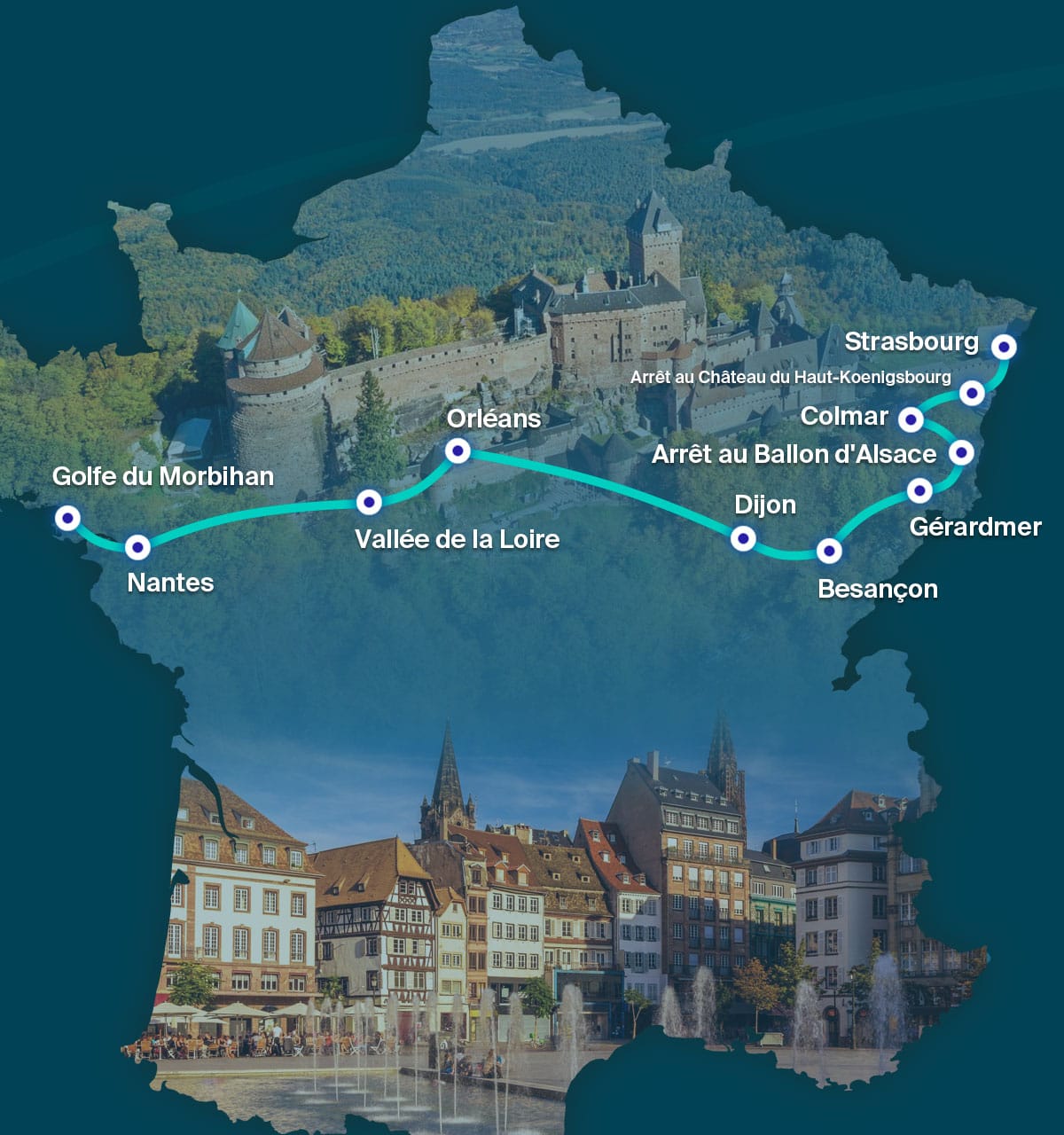
Alsace
Located on the west bank of the Upper Rhine, next to Germany and Switzerland, this small historical region offers a great variety: vast landscapes, dreamy villages, delicious food and much more - an inexhaustible source of surprises, a change of scenery for extraordinary moments!

Strasbourg
Our road trip begins in Strasbourg, in the capital of the Grand Est, located in the heart of Europe. The city's geographical location makes it a practical choice with no less than 8 European countries located within 500 km of Strasbourg: Germany, Austria, Belgium, Italy, Luxembourg, the Netherlands, Switzerland and the Czech Republic. Exuding youth and dynamism, Strasbourg will charm lovers of heritage, culture and the art of living!
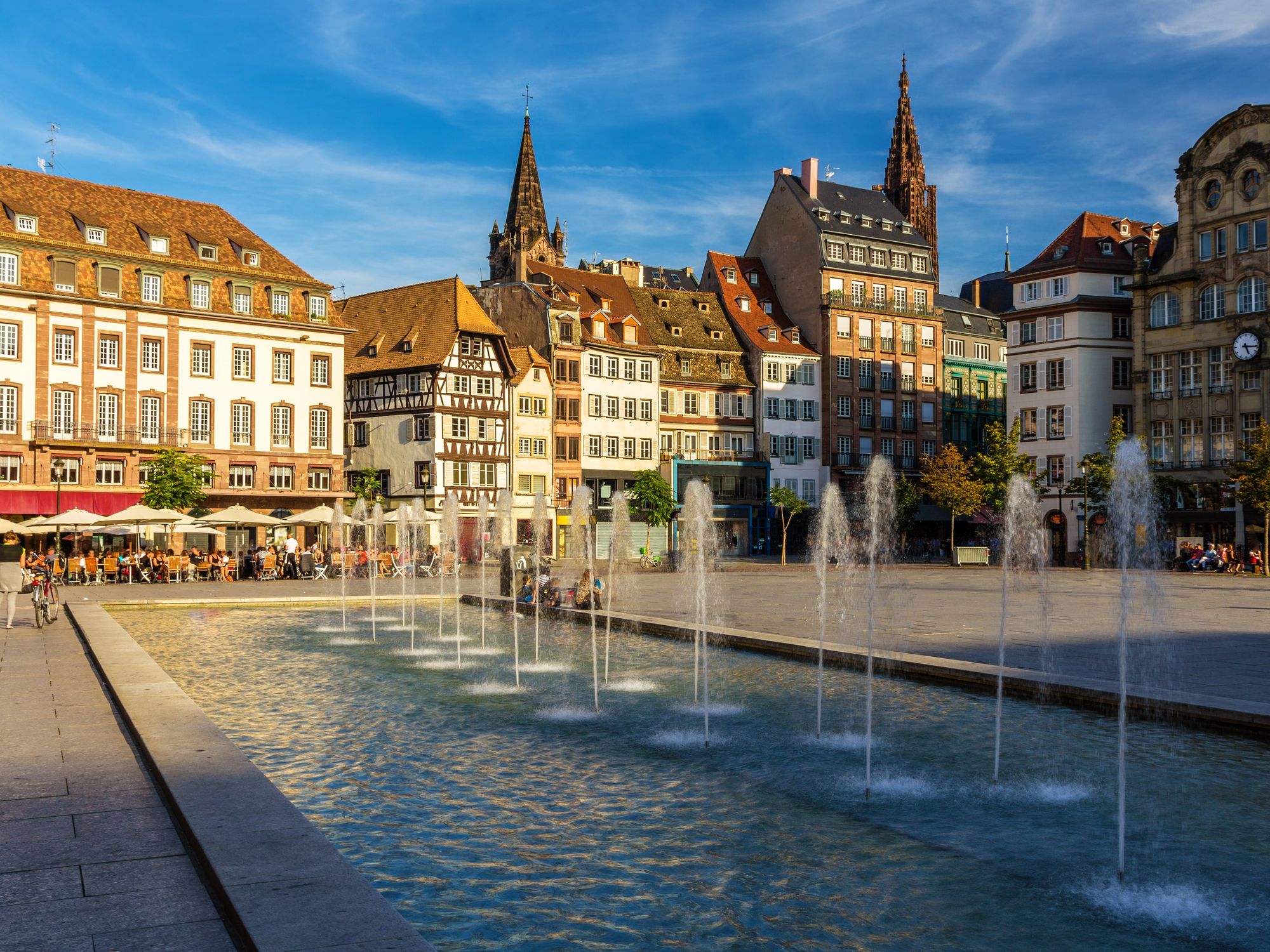
Not to be missed in Strasbourg:
- Petite France - This historic district, listed as a UNESCO World Heritage Site since 1988, is also known as the Tanners' Quarter. One of the main tourist sites in Strasbourg, it is divided into several canals crossing a district which in the Middle Ages housed the city's tanners, millers and fishermen.
- Cathédrale Notre-Dame de Strasbourg - An exceptional masterpiece of Gothic art. its Romanesque construction began in 1015 and was completed, in a Gothic style, in 1439. With its 142 m high spire, it is the tallest Christian monument ever built and is sometimes even described as the eighth wonder of the world. The facade of the cathedral, whose colour of pink sandstone changes depending on the time of day and the colour of the sky, offers an impressive spectacle of colour, especially on summer evenings.
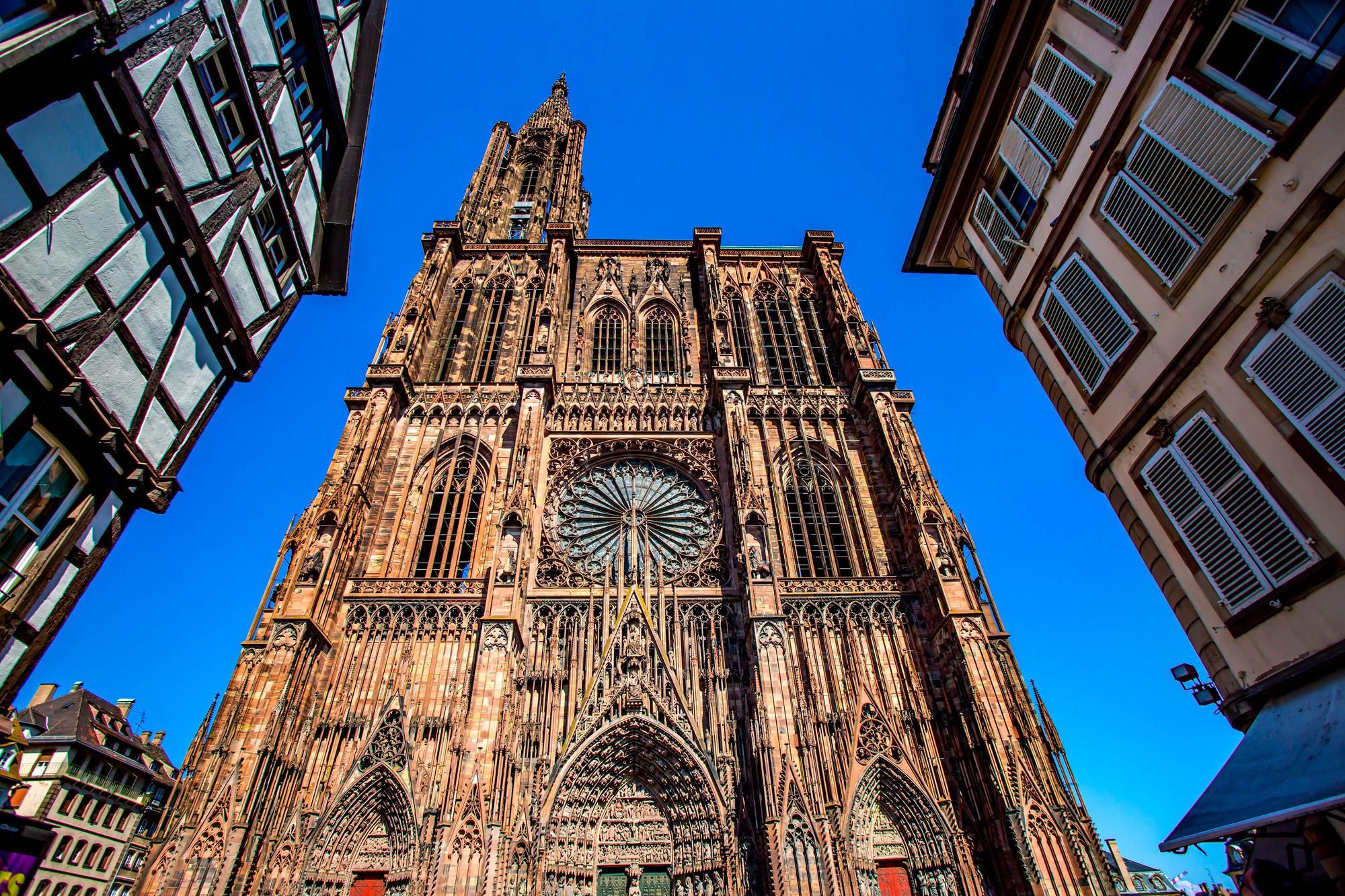
- Boat tour - Batorama organises frequent boat excursions to discover the city from all its sides. Starting point at the quay just below the Palais Rohan. Your route follows the River Ill around the Grand Île, the centre of Strasbourg, passing through the colourful La Petite France district. You will also have beautiful views of Strasbourg's architecture - houses, churches, public buildings, parks - as you tour the island. You will cross the imperial district, with its monumental buildings from the end of the 19th century. The visit then continues towards the Rhine and the European Quarter, seat of the European Parliament, the Council of Europe and the Palace of Human Rights.
- Place de la République - Place de la République is surrounded by historical monuments such as the Palais du Rhin, the National and University Library, the National Theater of Strasbourg, the Prefecture and the Public Finance Center.
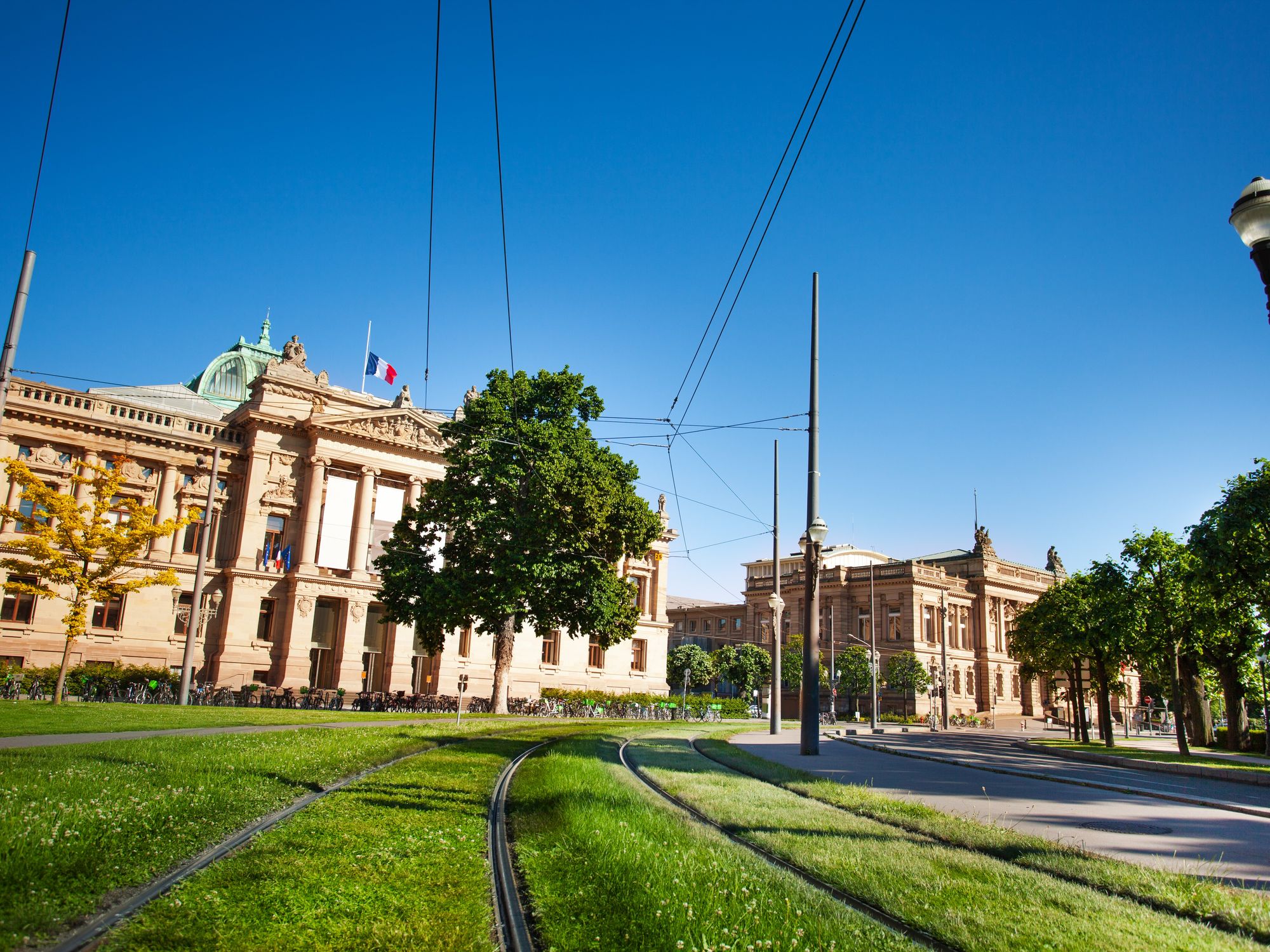
- Neustadt -The heart of the Neustadt district (New Town in German) was listed as a UNESCO World Heritage Site in 2017, an extension of the site including the old city centre and Strasbourg Cathedral. The district is a unique example of urban planning, merging the Haussmannian model with elements of Germanic architecture and urban planning.
- Palais du Rhin - The Palais du Rhin in Neustadt, a German district of Strasbourg, dominates Place de la République with its massive dome. This immense building surrounded by gardens and neighbouring stables is an exceptional example of 19th century Prussian architecture.
- Théâtre National de Strasbourg - The National Theater of Strasbourg is a palace initially built to house the legislative assembly of the regional parliament of Alsace-Lorraine after the region came under German control with the Treaty of Frankfurt (1871). It was built between 1888 and 1889 in the Neo-Renaissance style.
- Bibliothèque Nationale et Universitaire - The National and University Library is a public library located on Republic Square, the former Kaiserplatz, and faces the Rhine Palace.
- Parlement Européen et Quartier européen - Since its creation after the Second World War, the European Quarter of Strasbourg has been home to the Council of Europe, its European Court of Human Rights and the European Parliament of the European Union. It bears witness to European integration, the defence of human rights, democracy and the rule of law.
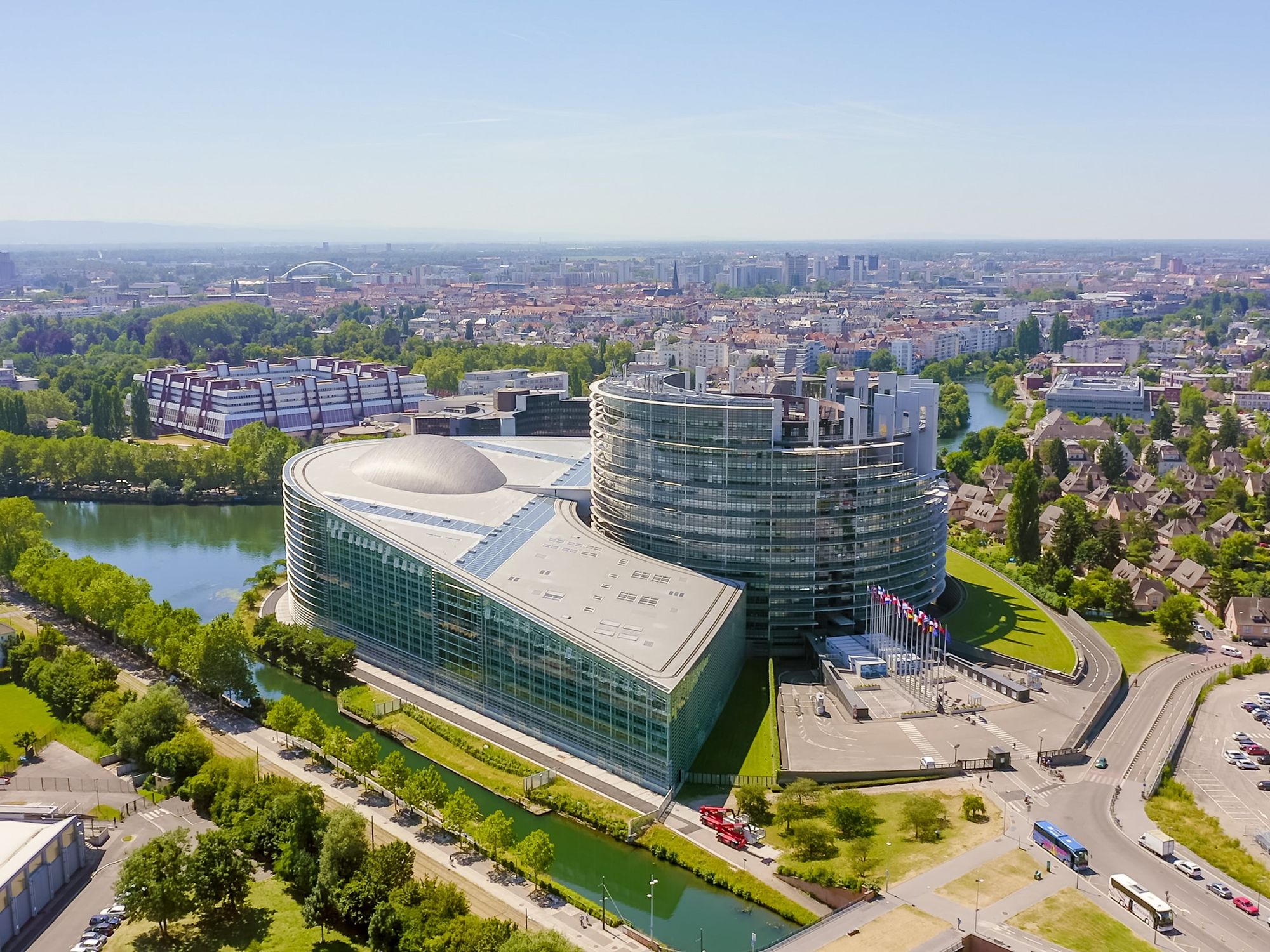
- Botanical Garden - Located in the heart of the Imperial district of Strasbourg, this green setting in the city centre is home to nearly 6,000 plant species. It is a real living museum with an arboretum, ecological beds and greenhouses. You can simply sit and relax in the shade of the beautiful trees on a pontoon by the pond.
- Parc de l’Orangerie - The oldest park in the city is the favourite destination for anyone looking for tranquillity. It is here that the stork, once threatened with extinction, was successfully reintroduced. More than 800 young storks have been born since 1971. This beautiful bird, which is also the symbol of Alsace, can today be admired whatever the time of year. The park is home to a lake with a romantic waterfall, the Buerehiesel, a pretty half-timbered house with a gourmet restaurant, a pétanque centre and its terrace and many activities for children including a miniature farm and its zoo (free entry).

- Le Vaisseau Museum - Embark aboard Le Vaisseau to explore the world of science and enjoy its 5,000 m² garden. You will travel through 6 universes with more than 130 interactive elements that children, accompanied by an adult, can touch, test and explore. This science discovery centre will offer you a unique experience, addressing the themes of construction, water, the human body, the animal kingdom, mathematics and logic.
- Tram Strasbourg - Kehl: bridge between France and Germany - Why not take a trip to Kehl in Germany! Inaugurated in 2017, after an interruption of 73 years, the Strasbourg-Kehl tram line is a connecting element, a guarantee of peace between France and Germany. It offers a new dimension of Franco-German integration. Kehl is a charming German front town in the heart of Europe and is anchored in a historic fort past. You will discover its beautiful shopping area and its culinary and cultural highlights such as the Jardin des Deux Rives and its pedestrian bridge. Visit the Turkish Mosque of Kehl, one of the largest in the region, with its two large minarets and its dome, located a few hundred metres from the centre of Strasbourg.
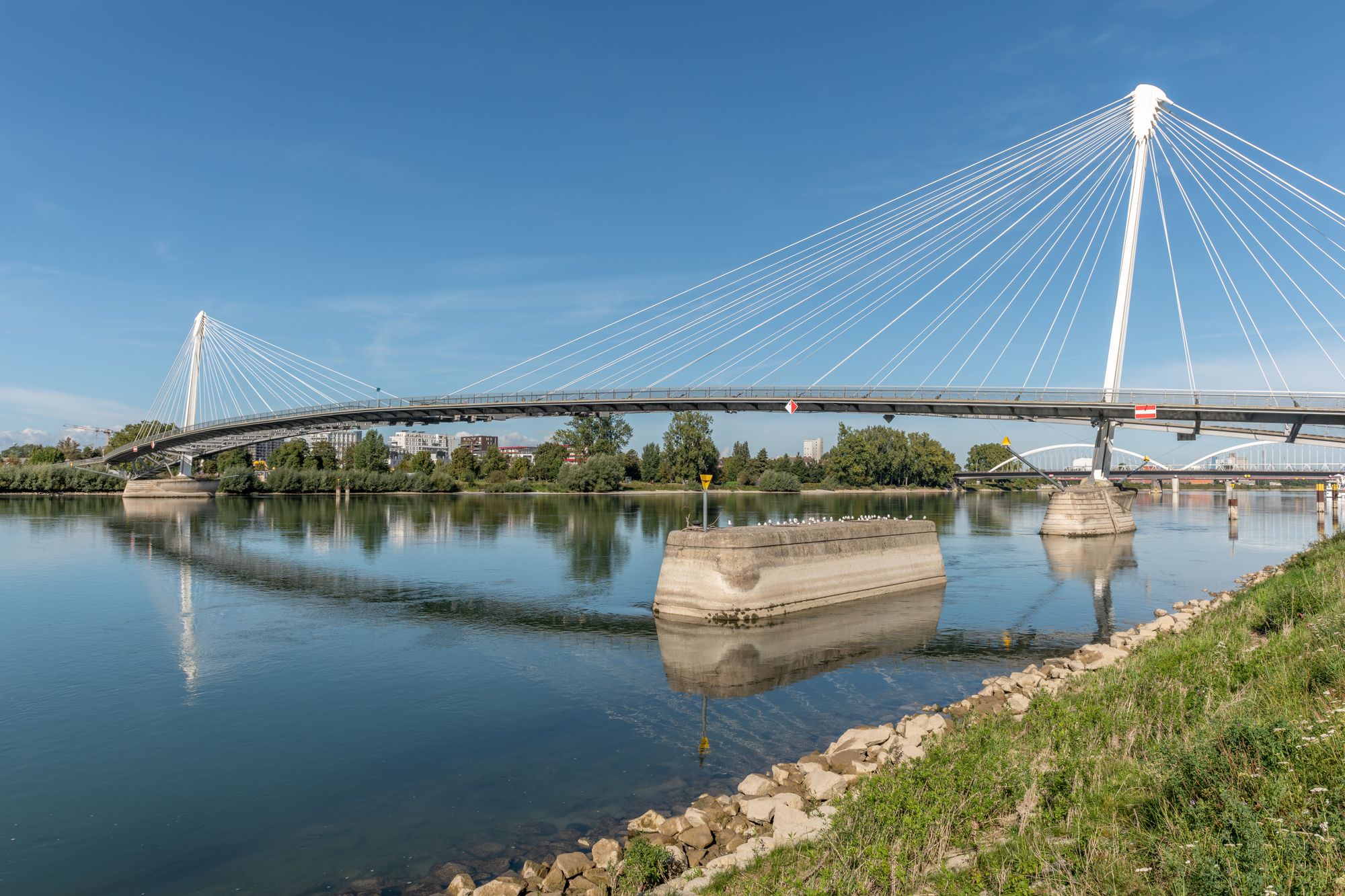
- Rue du Jeu des Enfants – Long a forgotten side street in central Strasbourg, Rue du Jeu des Enfants was transformed into a vibrant, artistic and unique pedestrian street in 2017 thanks to a local initiative. The street was decorated with plants and pops of colour, such as murals, fun street furniture, hanging artwork and multi-colored paving stones.
Strasbourg ➟ Colmar (1 hour)
Leave Strasbourg by following the A35 to reach the city of Colmar (approximately 1 hour journey). Stop at the mediaeval Château du Haut-Koenigsbourg, one of the must-see attractions in Alsace.
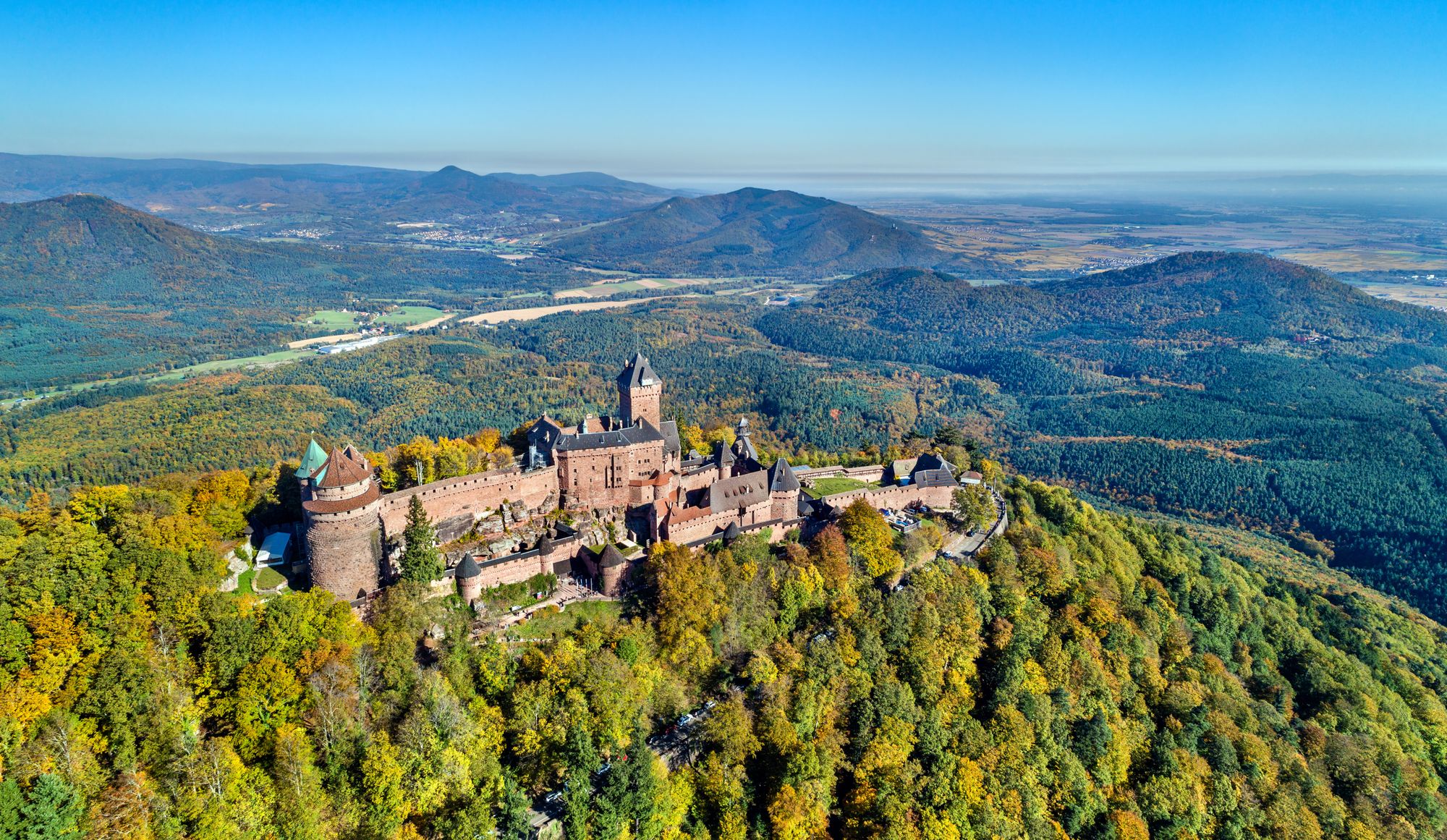
Colmar
This typically Alsatian city is exceptional for the richness and variety of its historical and architectural heritage. Park at Place Rapp and discover the city.
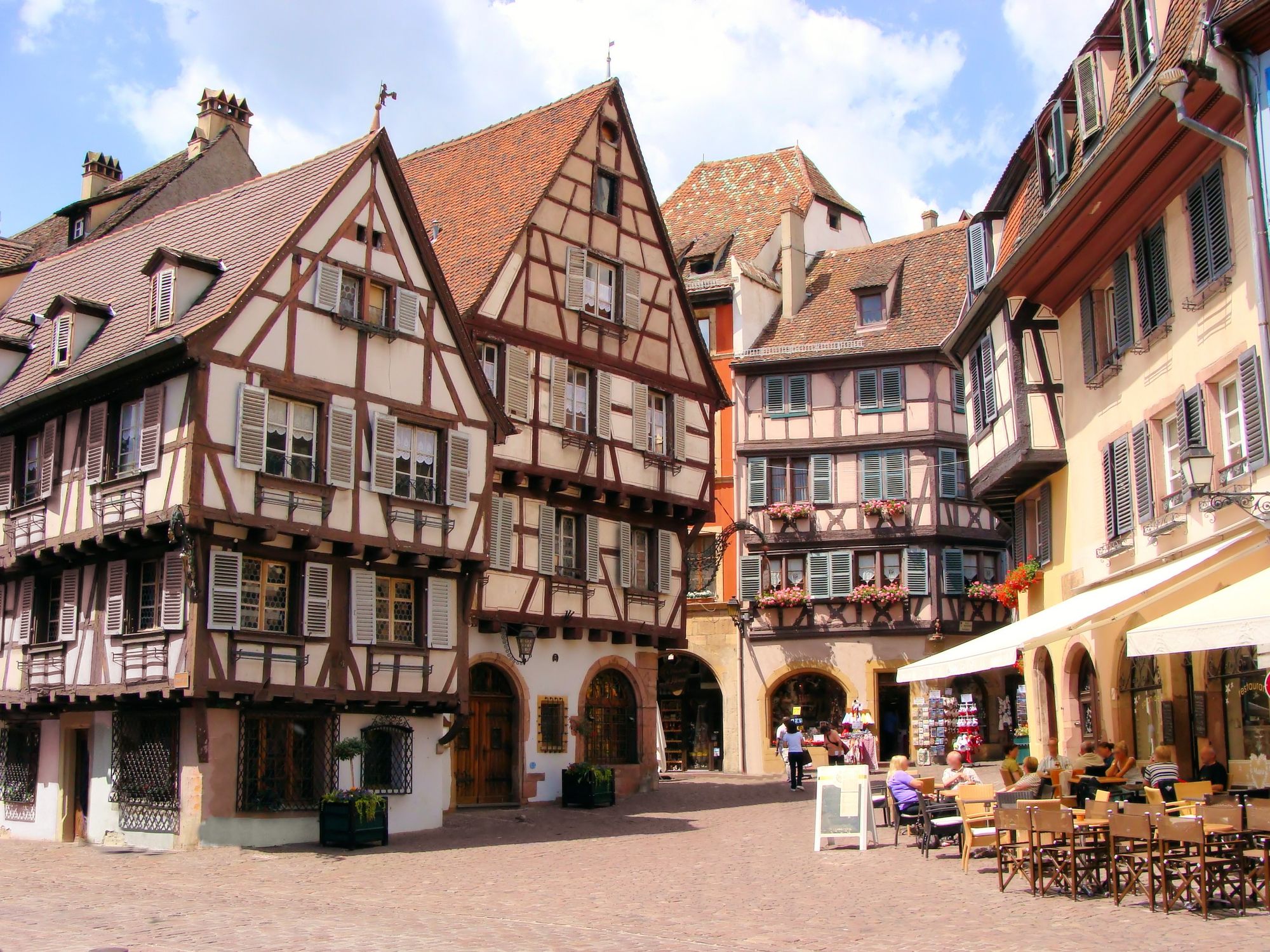
- Little Venice - Little Venice of Colmar is a picturesque old tourist district in the historic centre of Colmar. Its name comes from the historical organisation of life in the district around its canals of the Lauch River.

- Champs de Mars - The Champ-de-Mars public park is a true haven of peace, with vast green spaces with a fountain in the centre topped by the statue of Admiral Bruat (Colmarian hero of the French Navy in the 19th century) built by the famous sculptor Bartholdi and built in 1864. There is also another statue built by Bartholdi, that of General Rapp, the namesake of the square. The park also houses the Carousel 1900, a unique model in Europe due to its scale, the water jets of Place Rapp and a children's play park.

- Mediaeval city centre - Very well preserved picturesque mediaeval centre, which still has many wooden buildings.
- Shopping streets - Rue des Clefs is the main shopping street in Colmar. Rue de la Montagne Verte is a typical street in the city with half-timbered buildings and gourmet restaurants galore. Here, a canal splits the street in two, which gives additional charm. Rue de Marchands is a very touristy street, charming with its half-timbered roofs, its many colours and its shops.
- Fantasticable - One of the longest and fastest zip lines in France of more than 1 km which passes above the Bresse forest.
For a cultural touch, here are some must-see museums:
- The internationally renowned Unterlinden Museum exhibits Rhineland sculptures from the late Middle Ages and the Renaissance, including the famous Isenheim Altarpiece by Matthias Grünewald (painted from 1510 to 1516), one of the major pieces of world history of art.
- The Bartholdi Museum houses a large collection of statues, busts, sketches, original models, drawings and paintings. An entire room is dedicated to his major work, the Statue of Liberty. Many monuments due to Bartholdi can be discovered while strolling through the streets of Colmar.
- The Ecomusée d’Alsace in Ungersheim, 1/2 hour from Colmar, is the largest open-air museum in France. This is where authentic Alsatian constructions were transferred and reassembled, forming a living village: half-timbered houses, workers' houses, shop, town hall, fortified tower, village hall, farm, school, wash house, gardens, fields. You will also discover the traditional works of the region as well as the craftsmanship inside these generally old constructions (some dating from the 15th century) and open to the public.
Colmar ➟ stop at Ballon d’Alsace ➟ Gérardmer (2 hours 15 mins)
If you still haven't fallen under the spell yet, let's continue on the road to immerse ourselves in nature. It’s authentic, green and mountainous, on the way to Gérardmer via the Route des Crêtes passing through the Ballon d’Alsace, the Ballon des Vosges Regional Natural Park!
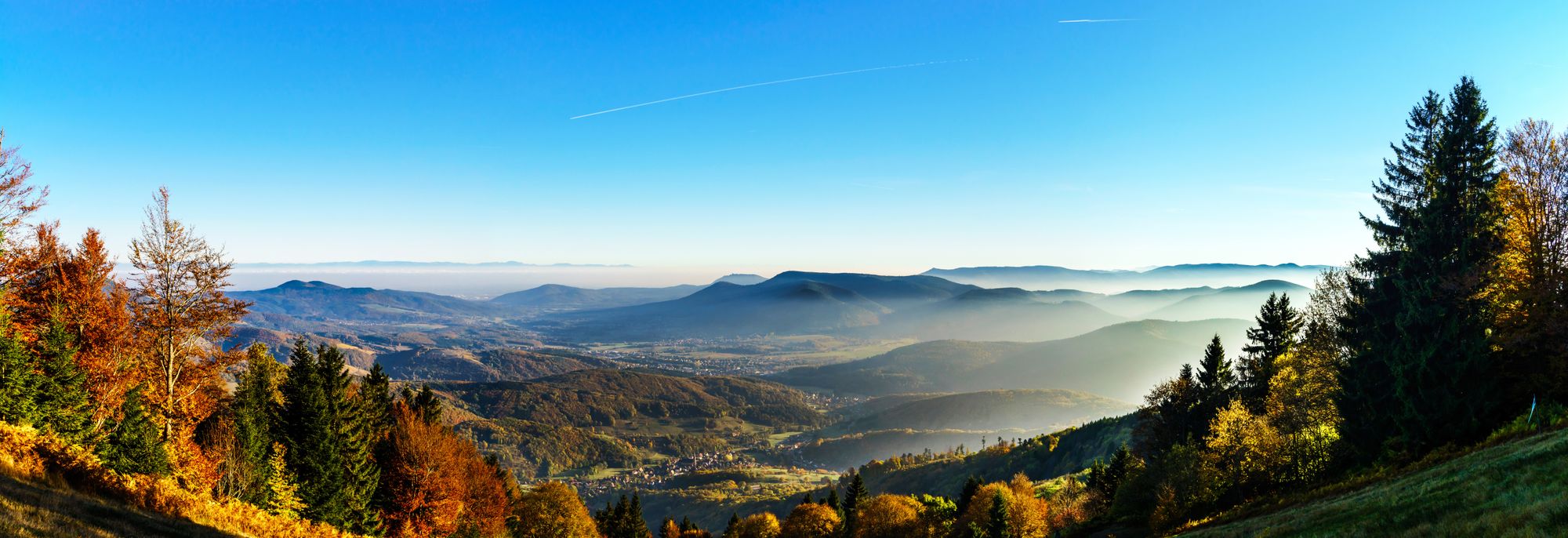
Ballon d’Alsace
Summit located in the southern part of the Vosges range which culminates at an altitude of 1,247 m. It offers a wide panorama including the Black Forest, the Jura, the Belfort Gap and, on a clear day, the Bernese Alps and Mont Blanc, as well as the ridges of the Vosges to the north.
Stop at Lake Alfeld above the Sewen walking spot (fishing is allowed). In summer, it welcomes many visitors but swimming, although wonderful in this magical place, is at the participants' own risk.
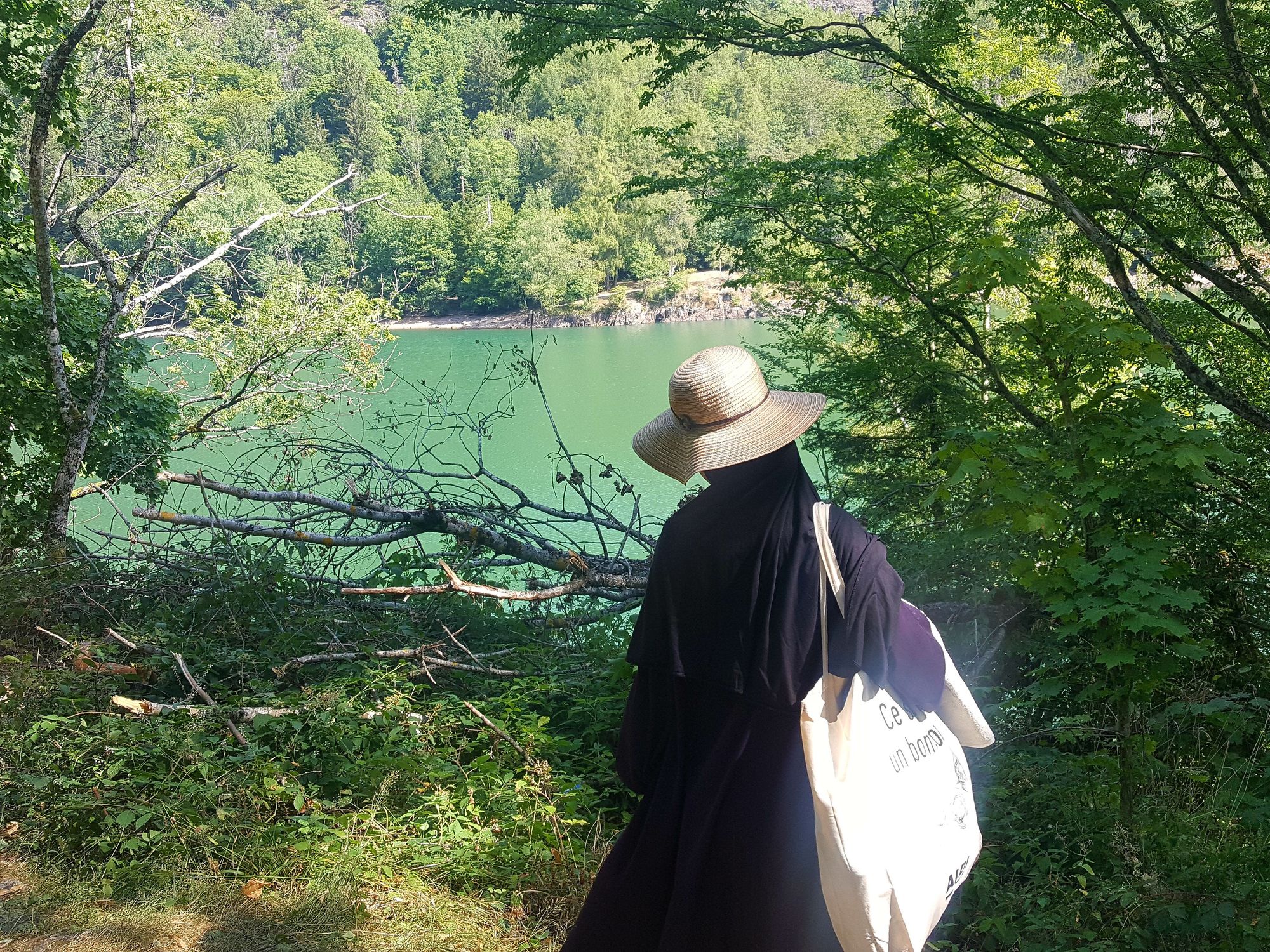
Gérardmer
The “pearl of the Vosges” offers landscapes worthy of the most beautiful postcards between natural lakes, glacial waterfalls and coniferous forests.

- Lake Gérardmer - Located at an altitude of 660 m, this lake of glacial origin is the largest natural lake in the Vosges and is equipped with a 6 km marked hiking trail. Swimming is supervised at Union Nautique beach from June to September and there is the possibility of swimming in some natural areas. The lake also offers many water activities.
- Lake Longemer - Lac de Longemer is a preserved natural lake of glacial origin at the foot of the Vosges mountain range in a classified site. Nicknamed the “mirror of 1000 reflections”, it offers changing brightness. Ideal for fishing, walking and swimming (unsupervised), it also offers pedal boat rental.
- Tendon Waterfall - The longest waterfall in the Vosges is a miraculous oasis of freshness. Drowned in the woods, it surges over thirty metres, polishing its stone sides.
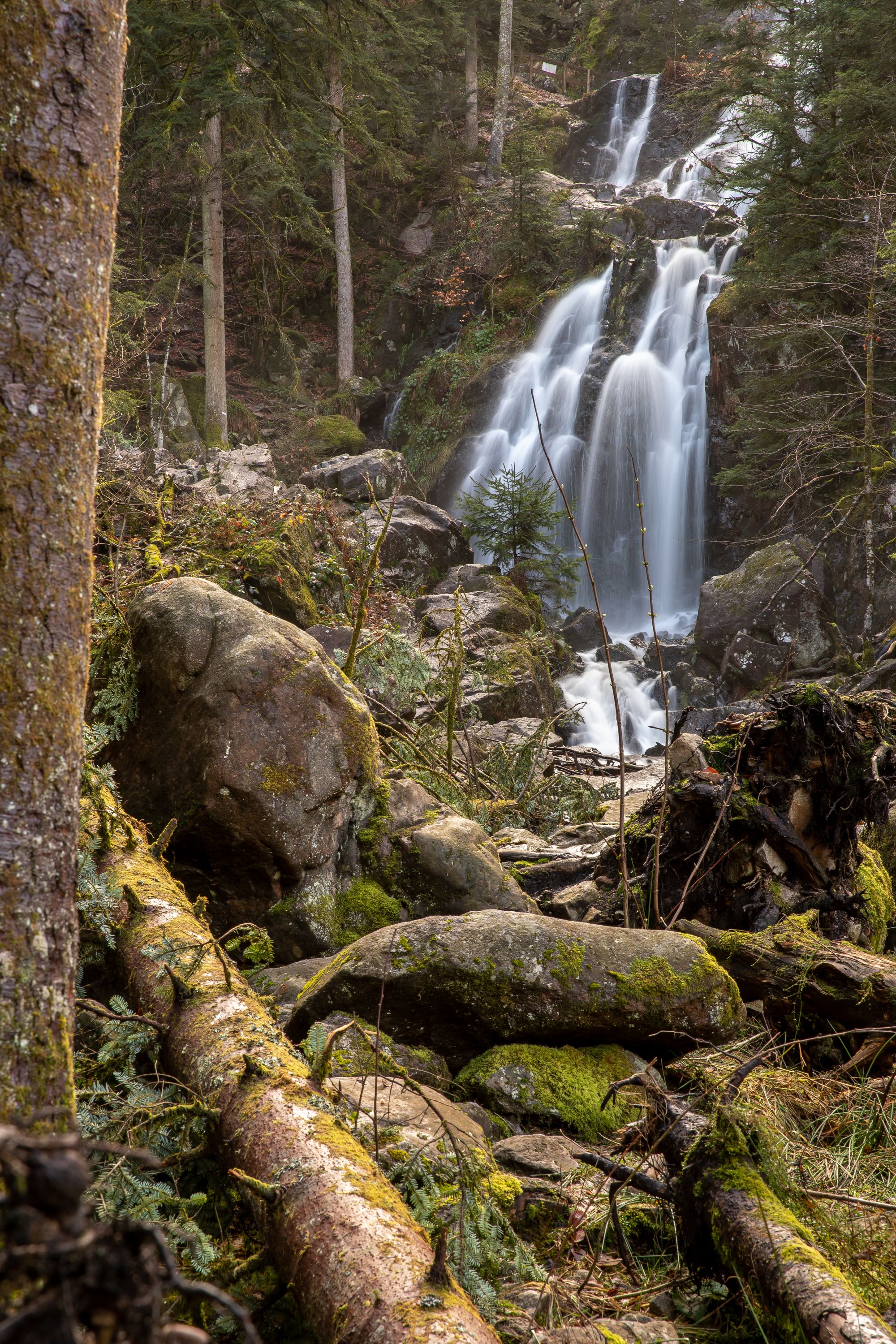
- Tour de Mérelle Observatory - The Mérelle observatory in the middle of the forest offers a panoramic view of the lake, the town and the surrounding landscapes.
- Caboterie des Lacs - Discover the ancestral profession of clog maker in this museum workshop by observing the art of carving clogs in wood.
- Bol d'Air Park - Experience extraordinary adventures at the Bol d'Air Adventure Park in La Bresse. In the heart of Vosges nature, you will have access to the adventure course, the big air jump and the barefoot trail in this picturesque setting in the middle of the forest, an experience for the whole family!
Gérardmer ➟ Besançon (2 hours 10 mins)
From the Vosges to Franche-Comté, by taking the “flowered villages route”, you will discover a multitude of flowery villages. This yellow and green sign label which, at the entrance to certain towns, attracts attention. “The national quality of life label”, we read below one, two, three or four roses depending on the botanical diversity and the quality of maintenance. So, pay attention to the signs at the entrance to each village!

Bourgogne-Franche-Comté
Besançon
Capital of Franche-Comté, Besançon is home to many ancient monuments and is listed as a UNESCO World Heritage Site. Surrounded by wooded hills crossed by the Doubs, it is a natural city full of history.
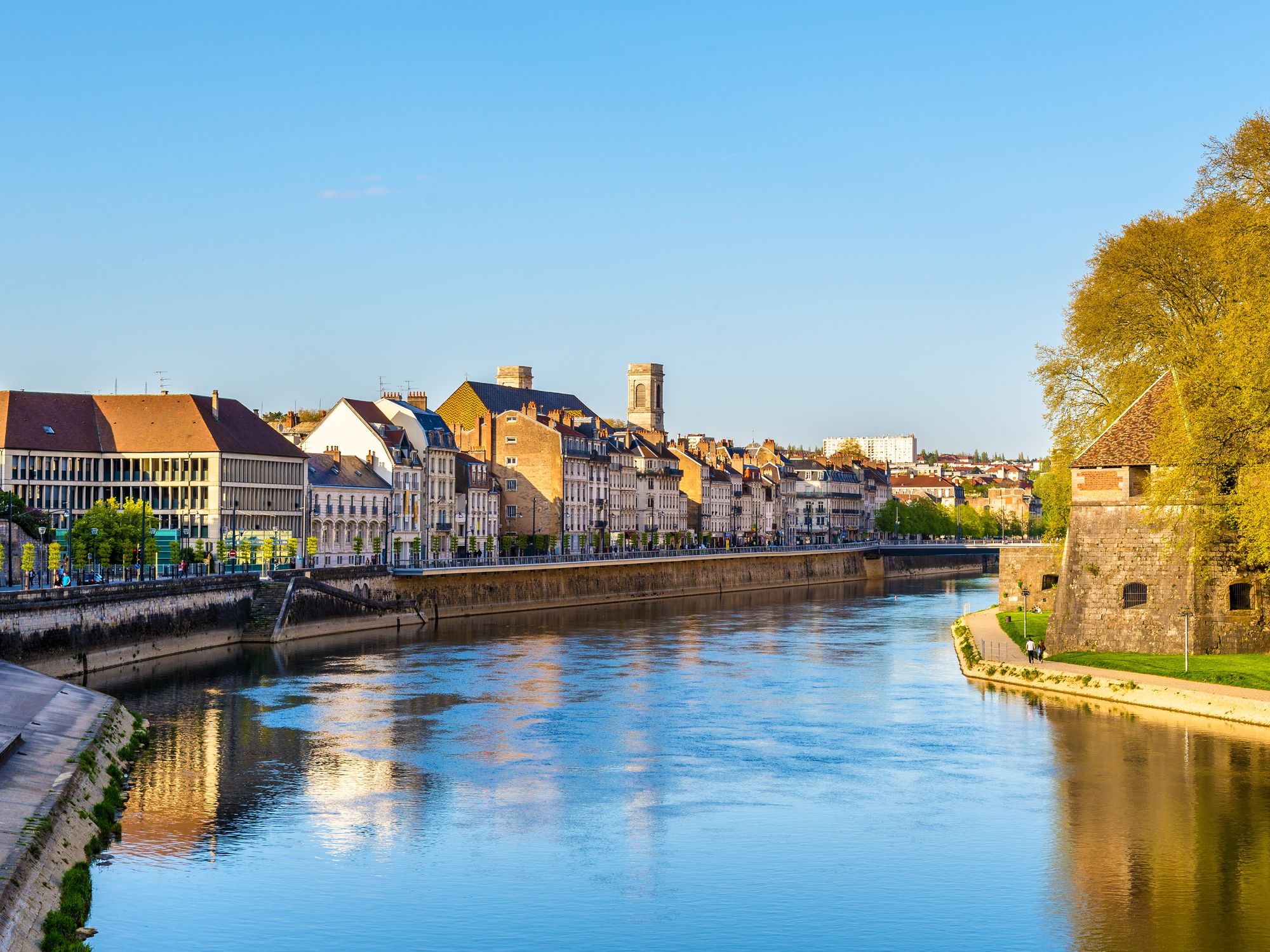
- Vauban Fortress - It was the architectural genius Sébastien Le Prestre de Vauban (1633-1707), military engineer to King Louis XIV, who designed or improved, among other things, the Vauban fortifications, 12 groups of fortified buildings and sites along the western, northern and eastern borders of France, also called the "iron belt". This property has been listed as a UNESCO World Heritage Site since 2008 and testifies to the apogee of classical fortifications, typical of Western military architecture.
- Citadel of Besançon - Dating from the 17th century, it is one of the most beautiful masterpieces of military architecture designed by Vauban. Occupying 11 hectares on Mont Saint-Etienne, it is one of the seven hills that protect Besançon. The ramparts offer a 360° view of the city of Besançon. This monumental site also offers an immersive multimedia show, an escape game and animated and dramatised visits.
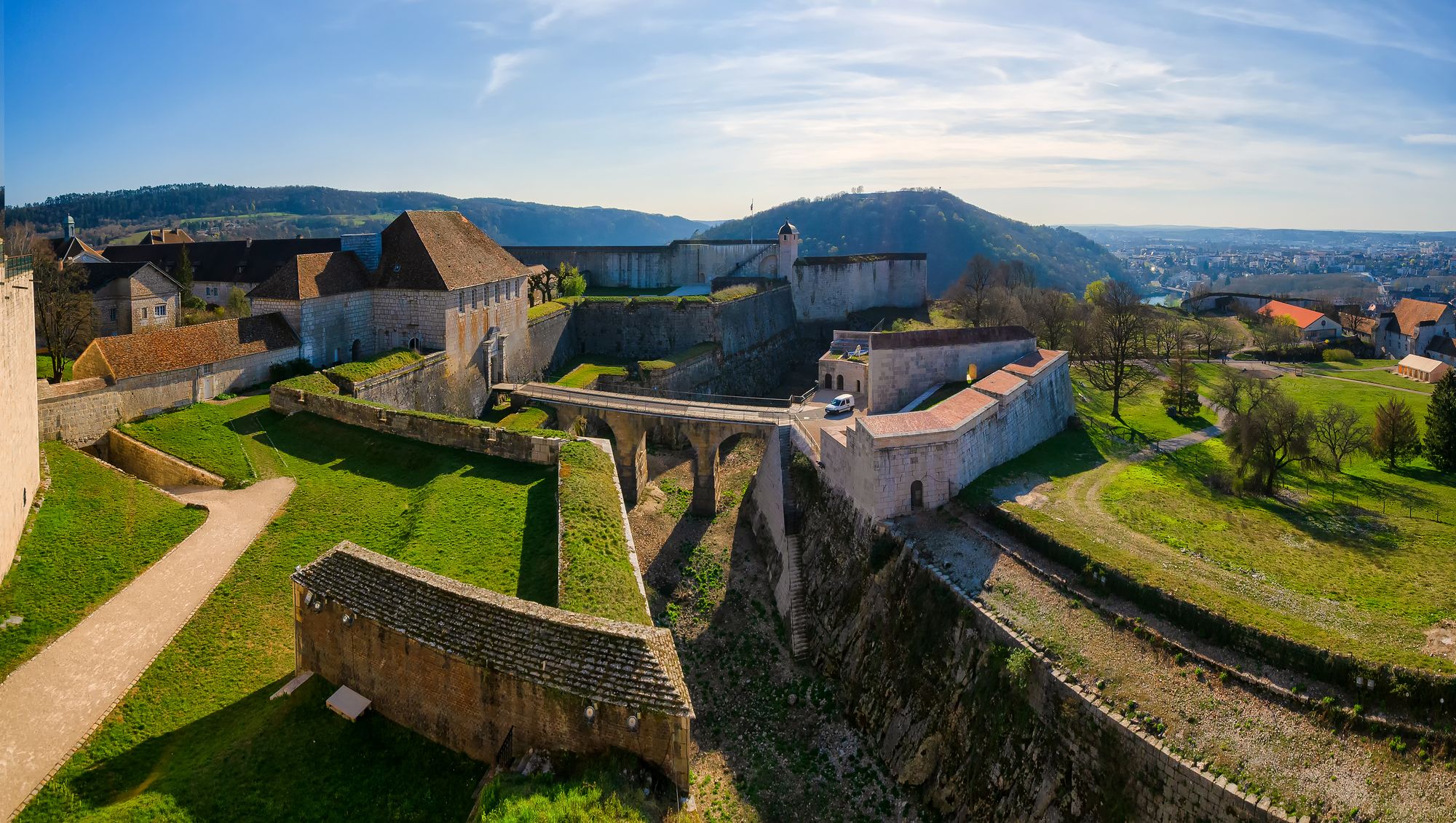
Finally, don't miss its three museums in France dedicated to history, memory and biodiversity:
Museum of Resistance and Deportation of Besançon - Currently closed for renovation, it houses extraordinary collections, including a collection of deportation art with more than 600 small paintings, statuettes and drawings made clandestinely in prisons and deportation camps. concentration of the Reich. The museum is expected to reopen in spring 2023.
Comtois Museum - This ethnographic museum reveals the heritage of Franche-Comté through its crafts, its industry, its entertainment, and its beliefs.
Muséum - The Muséum houses living and naturalised collections of the animal world highlighting its complexity through a naturalium, a zoological garden, an insectarium, an aquarium, a noctarium and a small farm.
- Roman remains - Besançon, called Vesontio in Roman times, is very rich in remains from Antiquity. In 1870, it was Auguste Castan, librarian and archaeologist, who discovered these remains. Here are a few :
Archaeological Square Castan - In the heart of the old town of Besançon, Square Castan is a shaded garden which includes eight Corinthian columns, remains of a water distribution basin and those of a hemicycle. As soon as they were discovered, these remains were highlighted by an English garden, which was rehabilitated in 2004, in order to restore its 19th century appearance.
Black Gate - The triumphal arch was built around 175 AD. B.C. in honour of the emperor Marcus Aurelius. Black for a long time, it has regained its original colour thanks to restoration work.
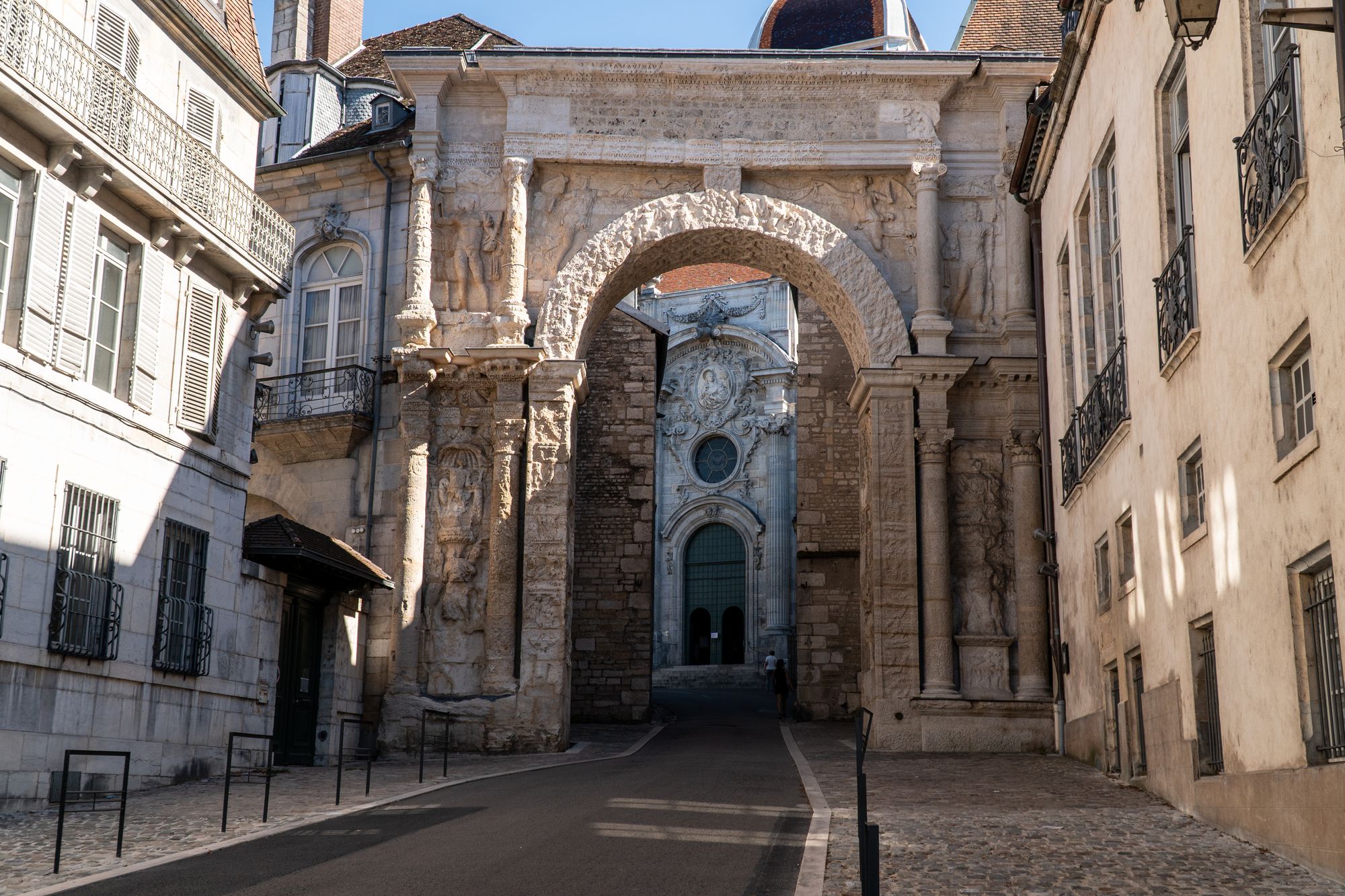
Besançon Arena - remains of a Roman amphitheatre dating from the 1st century.
- Watchmakers - Besançon became the capital of French watchmaking at the end of the 18th century when the Swiss watch industry was hit by unemployment and its watchmakers came to settle in Besançon.
- Besançon Astronomical Clock - The astronomical clock of Besançon Cathedral is one of the most complicated horological devices in the world. Installed in 1860 and still in working order more than a century and a half later. The clock has 30,000 parts, 70 dials, 122 indicators, local time for 17 locations around the world, and much more information.
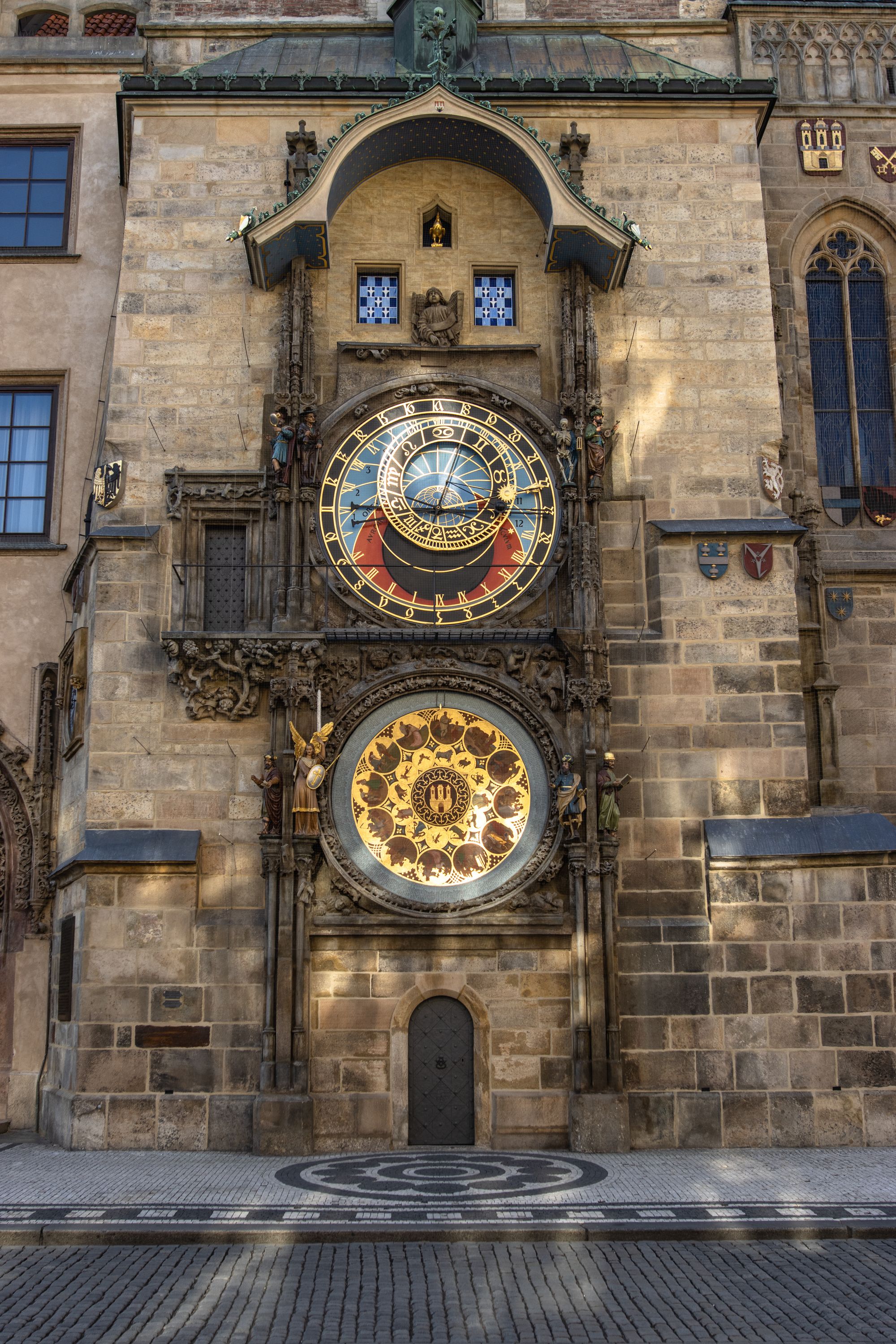
- Museum of Fine Arts and Archaeology - This museum has the oldest public collection in France and is part of the French and international cultural landscape. The richness of its collections includes a collection of European graphic art (more than 6,000 drawings), an important archaeological heritage (Egyptian, Mediterranean collections, regional background), numerous sculptures, ceramics, pieces of goldwork and an exceptional collection of paintings representative of the main trends in the history of Western art from the end of the 15th to the 20th century.
- Museum of Time - Housed in the Palais Granvelle, built in the 16th century inspired by the Italian Renaissance, this unique museum tells the story of the watchmaking know-how of Besançon and Franche-Comté. Interactive and fun, it dismantles concepts and mechanisms to better decipher time with astronomical clocks with frequency echoes and quartz clocks with atomic clocks.
- Chocolaterie Le Criollo - For all chocolate lovers, Chocolaterie Le Criollo offers a unique pleasure, a taste discovery and an unexpected sensation.
Besançon ➟ Dijon (1 hour 15 mins)
Dijon
Did you say Dijon? You certainly know the name of this city because of the famous and delicious Dijon Mustard. However, its name designates a recipe - and not an origin. The international city of gastronomy: gingerbread is a local specialty.
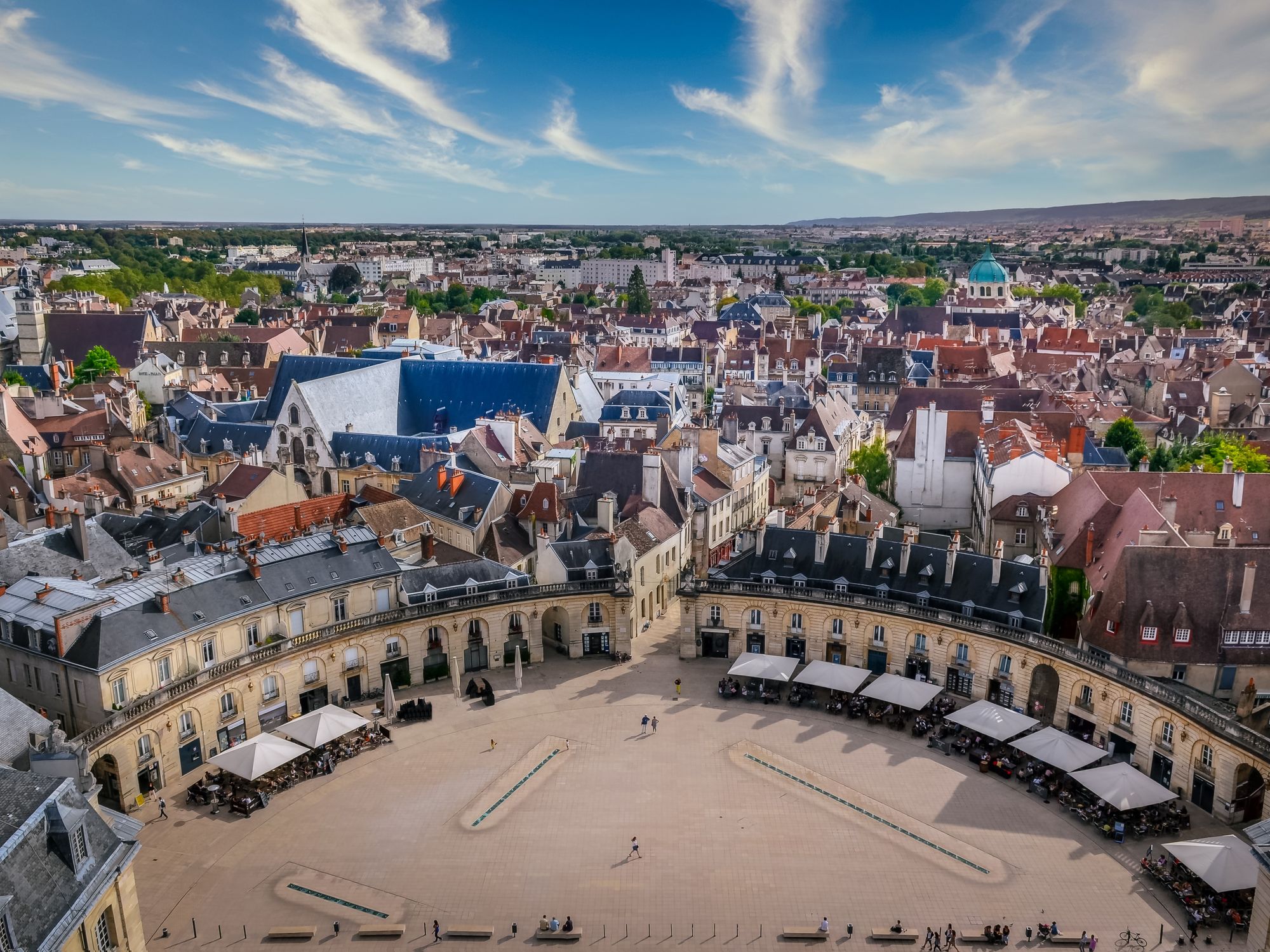
- Palais des Ducs - Iconic site of Dijon, the Palace of the Dukes and States of Burgundy reveals several centuries of history. Built in the 14th century by the famous Duke Philippe the Bold, it is a remarkable architectural ensemble.
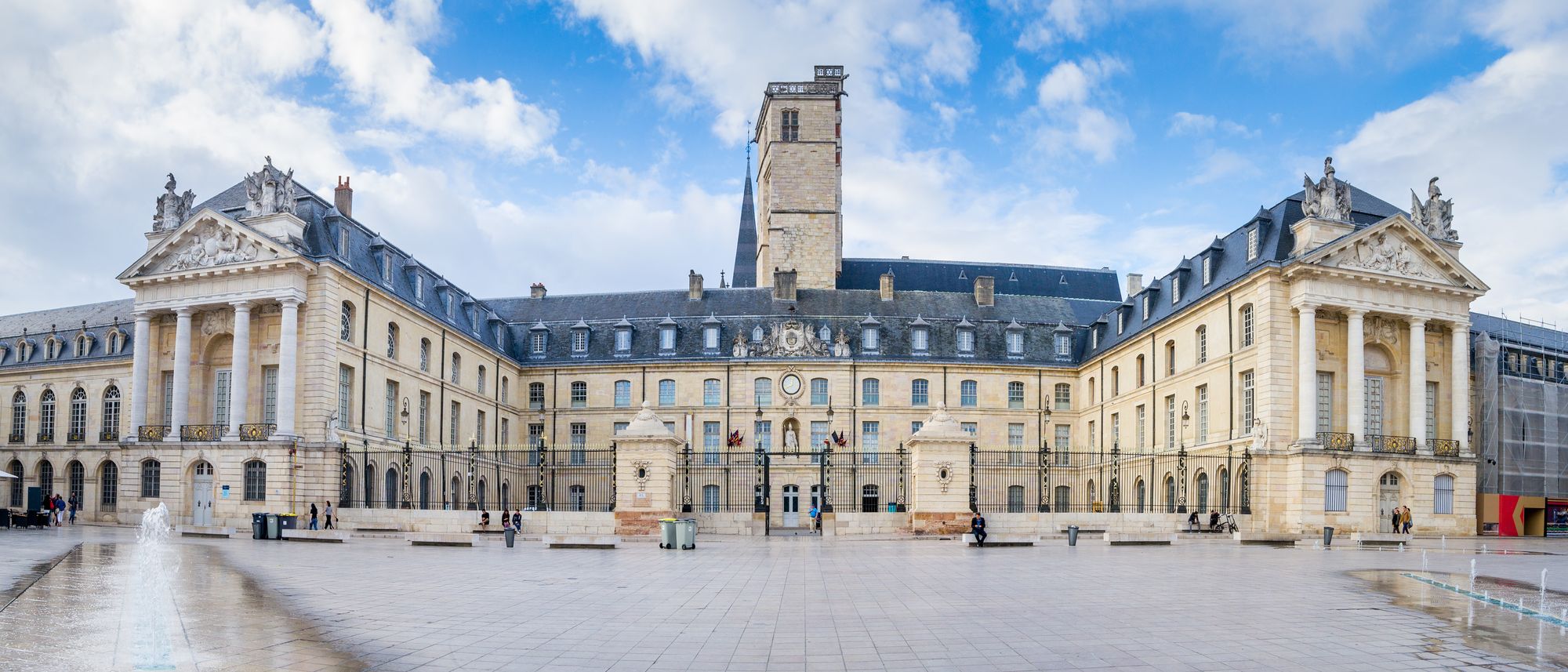
- Natural History Museum of Dijon - The Natural History Museum of Dijon, which occupies the former barracks of the Dijon arquebusiers in the Garden of Sciences, reveals the riches and diversity of life through reconstructions, models, stuffed specimens, fossils, multimedia, casts.
- Arquebuse Botanical Garden - The Arquebuse municipal botanical garden, created in 1833, is rich in around 3,500 species of botanical plants from Burgundy and around the world, spread over more than 5 hectares with a public garden, arboretum, rose garden, natural history museum and planetarium.
- The Consortium - This contemporary art centre presents temporary exhibitions of works by many nationally and internationally renowned artists. The Consortium also invites a process of reflection and experimentation in the field of cultural engineering and the management of cultural and artistic activities linked to live performance.
- Halles de Dijon - Listed in the Inventory of Historic Monuments, this true temple of gastronomy brings together a large number of artisans, producers and traders. The building also impresses with its architecture with an exterior structure inspired by classical architecture with a succession of arcades and columns with fluted shafts and capitals decorated with vine branches. It includes four pavilions articulated around two cross-shaped streets.
Dijon ➟ Orléans (3 hours 15 mins)
Centre Val de Loire/Vallée de la Loire
A gentle escape, this multifaceted territory is the meeting point between historical heritage and natural landscapes. Discover the history of France through its UNESCO World Heritage sites. The Loire is the longest river in France and several of twenty important castles are located on the banks of the royal river, partly built in the 15th and 16th centuries. Before travelling the Route de la Loire for 115 km along the river from Montsoreau to La Varenne right bank and left bank, spend the night in Orléans, a city with a rich historical, cultural and architectural heritage.
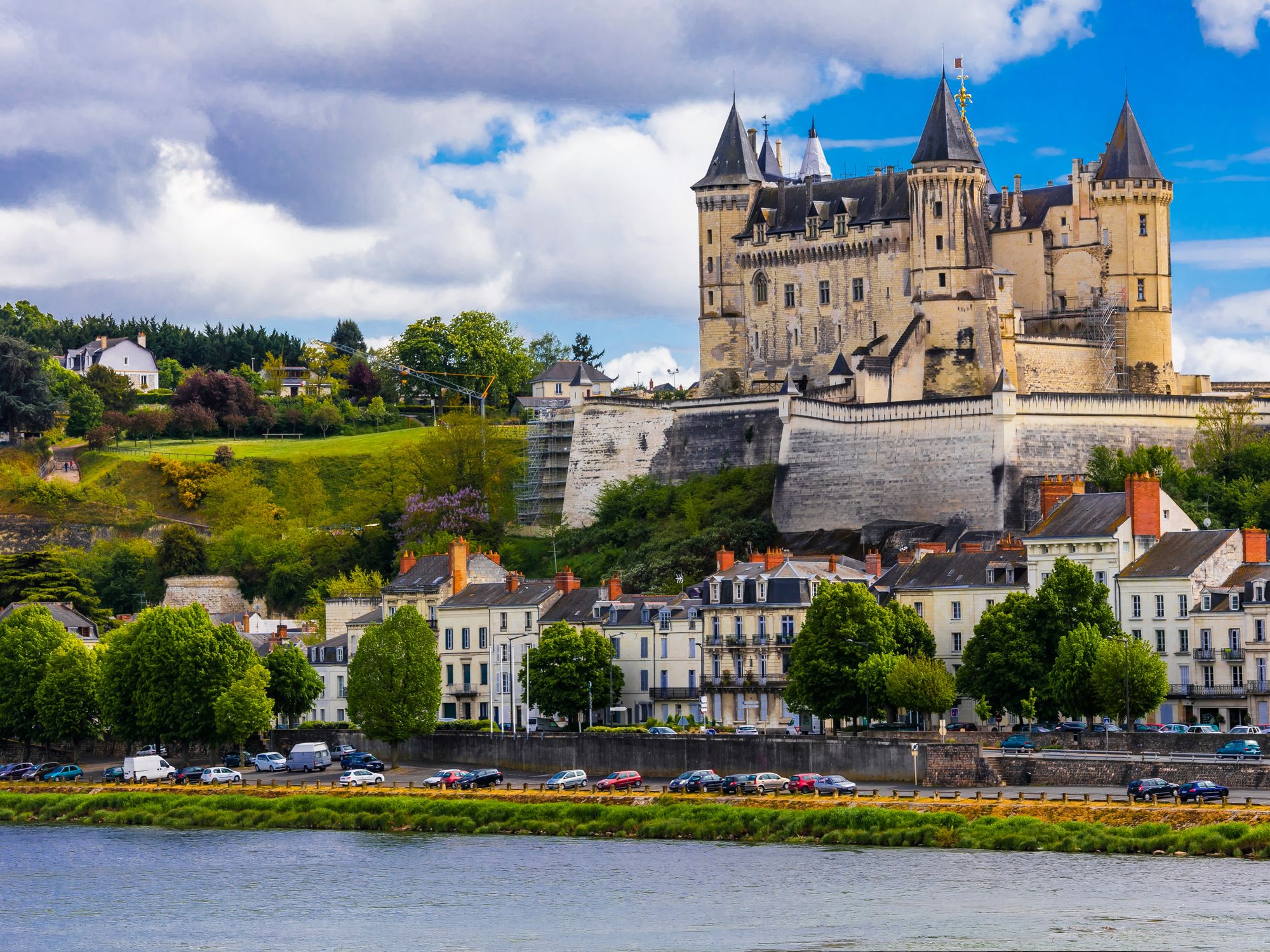
Orléans
Nestled on the banks of the Loire, Orléans, City of Art and History, is one of the oldest cities in France and offers authentic tourism, where history, Joan of Arc and the Loire take centre stage.
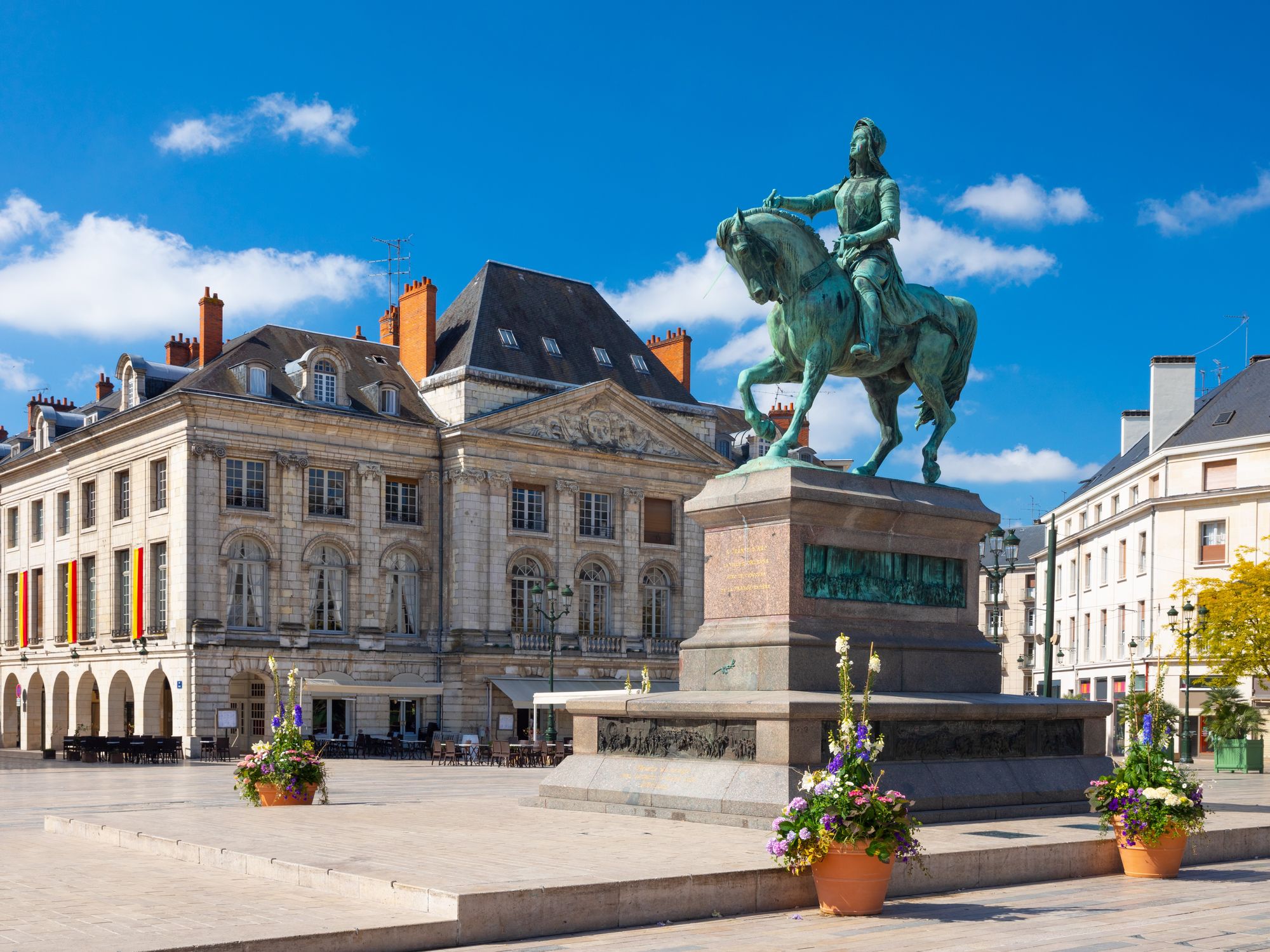
- Hôtel Groslot - One of the most visited monuments in Orléans with its sumptuous decor, this Renaissance gem will enchant you! The old town hall, recognisable by its magnificent red brick facade, was originally the main residence of Jacques Groslot, bailiff of Orléans from 1521 to 1545. The hotel hosted many historical figures including Charles IX, Henry IV, Mary Queen of Scots and Catherine de Medici. It houses sumptuous lounges and gilded woodwork punctuated by the memory of Joan of Arc.
- Old town of Orléans - In the Burgundy district, the old town with its beautiful half-timbered facades and Renaissance buildings is one of the highlights of the city. An ideal place to stroll for a while while strolling through the maze of streets of this old merchant district.
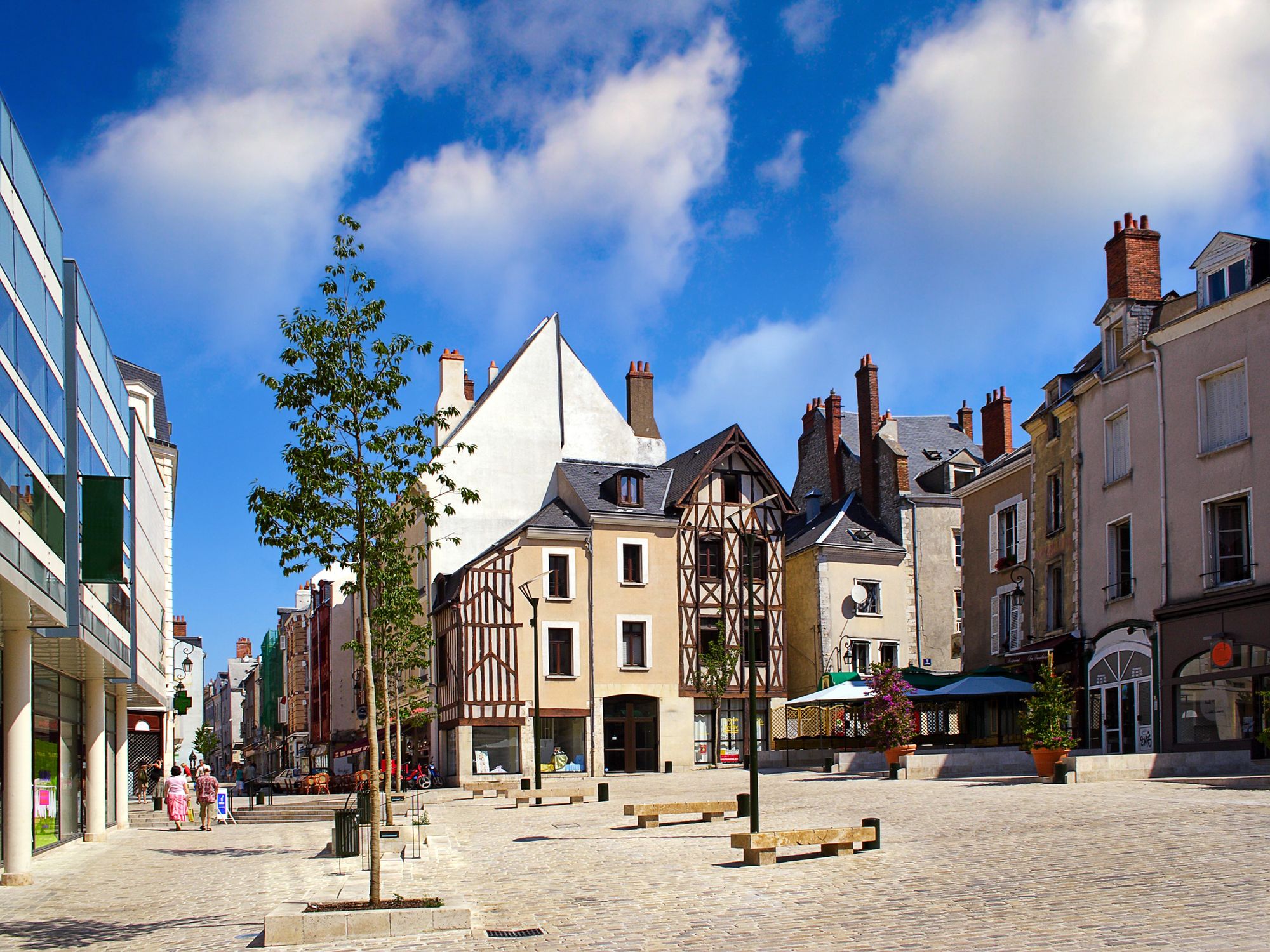
- Monuments linked to Joan of Arc - Joan of Arc, the Liberator of France who liberated Orléans in May 1429, is celebrated everywhere in this city! Step back in time by visiting the House of Joan of Arc, where she stayed in April and May 1429, the 19th century equestrian statue on the Place de Martroi and the works preserved at the Museum of Fine Arts.
Orléans ➟ Nantes (3 hours 30 mins)
Here are some castles on the banks of the Loire not to be missed:
- Château de Chenonceau - Nicknamed the Château des Dames and embodying the elegance of the 16th century Renaissance châteaux built in the valley, it is one of the most majestic châteaux in the Loire. It is also the only castle-bridge in the world with five arches elegantly spanning the Cher river.

- Château du Clos Lucé - This large château in the centre of Amboise was built in 1471 by Hugues d'Amboise and had several famous owners, including King Charles VIII of France and Leonardo da Vinci.

- Château de Villandry and its gardens - The Château de Villandry is a complex which closely combines architecture and gardens, an original creation between tradition and innovation. Nicknamed the Garden of France, it has remarkable French-style gardens which are among the most beautiful in France along with those of the Château de Versailles.
- Château Royal de Blois - Classified as a historic monument since 1845, the royal château of Blois invites you to a fascinating spectacle of the art and history of the Loire châteaux.
- Château de Chambord - Listed as a UNESCO World Heritage Site since 1981, it is the jewel of Renaissance architecture. Located 14 km east of the city of Blois, it was initially built to accommodate the Counts of Blois, then the Dukes of Orléans three centuries later, then Kings Louis, François I, Henri II and Charles IX and Louis XIII resided there successively. Note that Leonardo da Vinci responded to the invitation of François I, and it is the castle most influenced by the famous Italian painter! Of the 5,500 ha, 1,000 are open to the public!
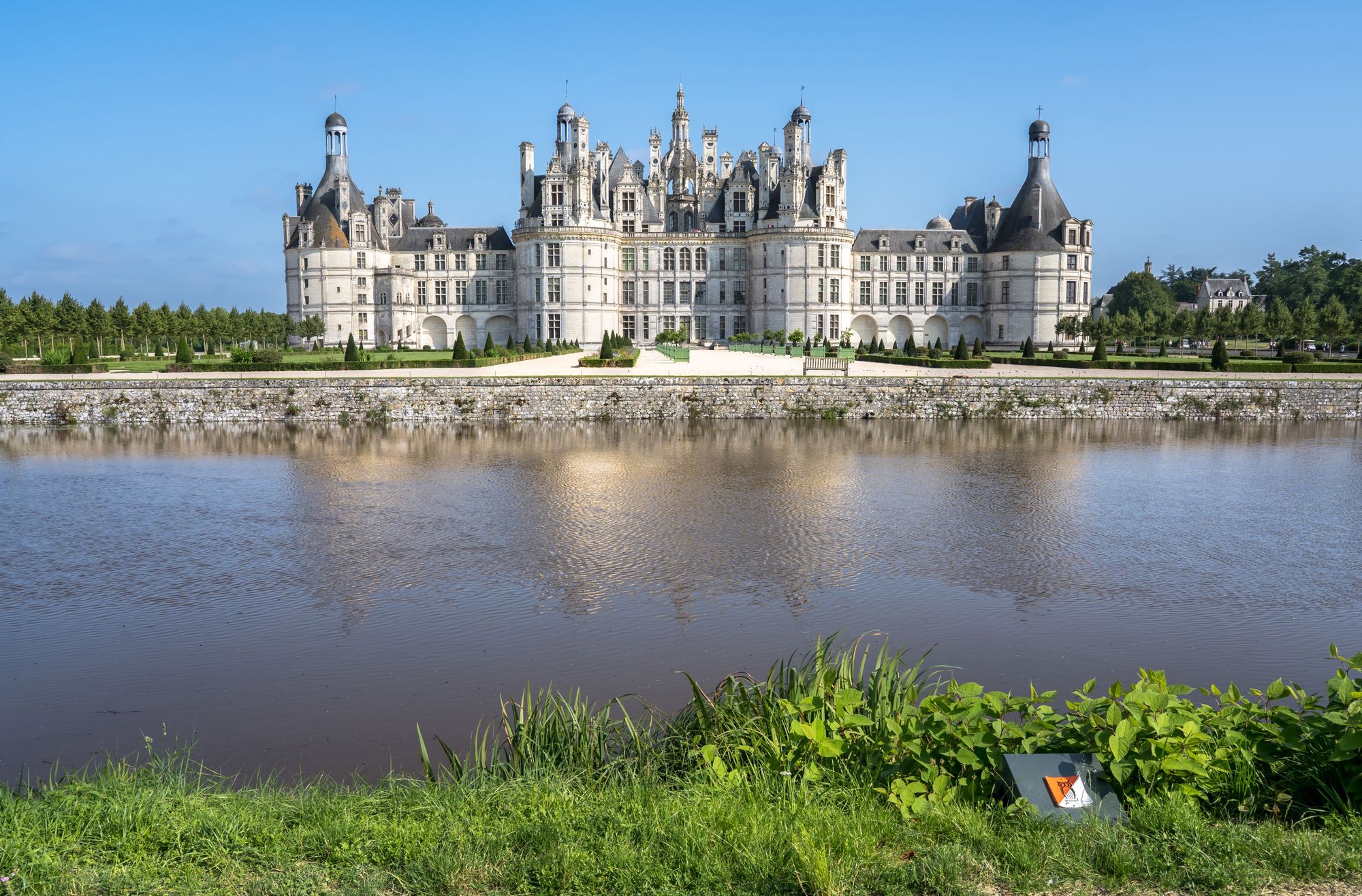
Brittany
Nantes
The only French city to have been named European Green Capital, Nantes is a welcoming and innovative city with a long history as a port and industrial centre.
- Château des ducs de Bretagne - Lively site, witness to the fascinating history of Nantes, the castle once housed the Dukes of Brittany. Now a local history museum with multimedia exhibitions and a footbridge at the top of its fortified ramparts, the architecture of the castle is halfway between Gothic and Renaissance.

- Bouffay district - This lively, historic district with mediaeval streets and half-timbered houses is popular with students and tourists alike. It is full of cafés and restaurants. Close to must-see sites such as the Château des Ducs de Bretagne and Nantes Cathedral, Bouffay combines historic charm with modern dynamism.
- River Erdre - This scenic waterway is renowned for its tranquil beauty and picturesque boat trips. Lined with elegant chateaux and verdant parks, it is a popular spot for leisure activities such as boating, kayaking and riverside walks. Often referred to as the “most beautiful river in France” by King Francis I, it offers a peaceful escape from the heart of the city, perfect for nature lovers and those seeking relaxation.
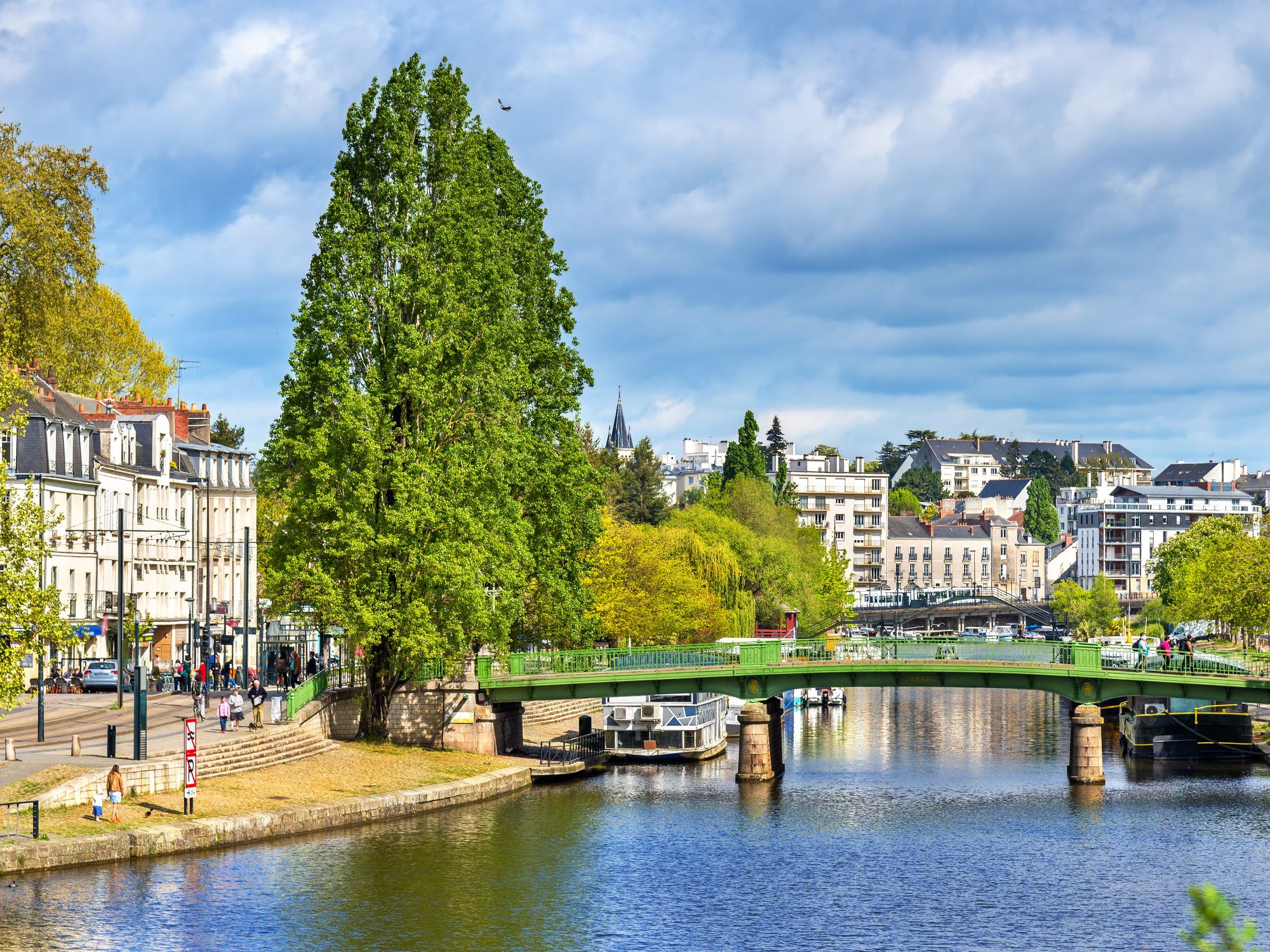
- Machines de l'île - This new artistic, tourist and cultural project is located in the old covered buildings of the former shipyards of Nantes which were formerly used for shipbuilding (the naves), then for activity sites. The monumental mechanical structures transport visitors into a world of dreams and magical journeys. Discover the Great Elephant, visit the Gallery of Machines and walk along the Prototype Branch of the future Heron Tree.
Nantes ➟ Golfe du Morbihan (1 hour 30 mins)
Golfe du Morbihan
The flagship destination of Southern Brittany, the Gulf celebrates the alliance of land and sea, is home to charming coastal towns and villages, but also a rich cultural, architectural and gastronomic heritage that leaves no one indifferent.

Here are some sites not to be missed:
- Carnac Alignments - Visit the largest megalithic complex of its type in the world, a major and unique site in prehistoric Europe. This extraordinary archaeological curiosity occupies a vast territory of about 40 hectares and includes more than 3,000 menhirs, set in rows of stones dating back to 5,000 BC. which were built by Neolithic peoples.

- Josselin Castle - Guarded by its three round towers and overlooking the canal, the town's extraordinary castle is a formidable spectacle which today remains the home of the Rohan family. Beyond the entrance gate, the castle extends over a wooded park and a central courtyard, which offers a beautiful view of the flamboyant Gothic facade of the castle. The castle is full of treasures, including a mediaeval-style dining room, a library of 3,000 volumes and a large living room filled with Sèvres porcelain, Gobelins rugs and an astronomical clock.
- Megaliths of Locmariaquer - This unusual Neolithic site to the east of the village of Locmariaquer (13 km south of Auray) is located in an area rich in dolmens. It has three distinct forms including a giant broken menhir (20 m long and the tallest in Western Europe), the Merchants' Table dolmen and an immense tumulus which covers multiple tombs.
- Pointe des Poulains - This peninsula located in the commune of Sauzon at the north-west end of Belle-Île-en-Mer offers a grandiose site whose elements are unleashed by the weather and the tides in an environment of coves, short grass, beaches, chimneys and rocks. At high tide, the end where the lighthouse is located is no longer accessible on foot and becomes an island.
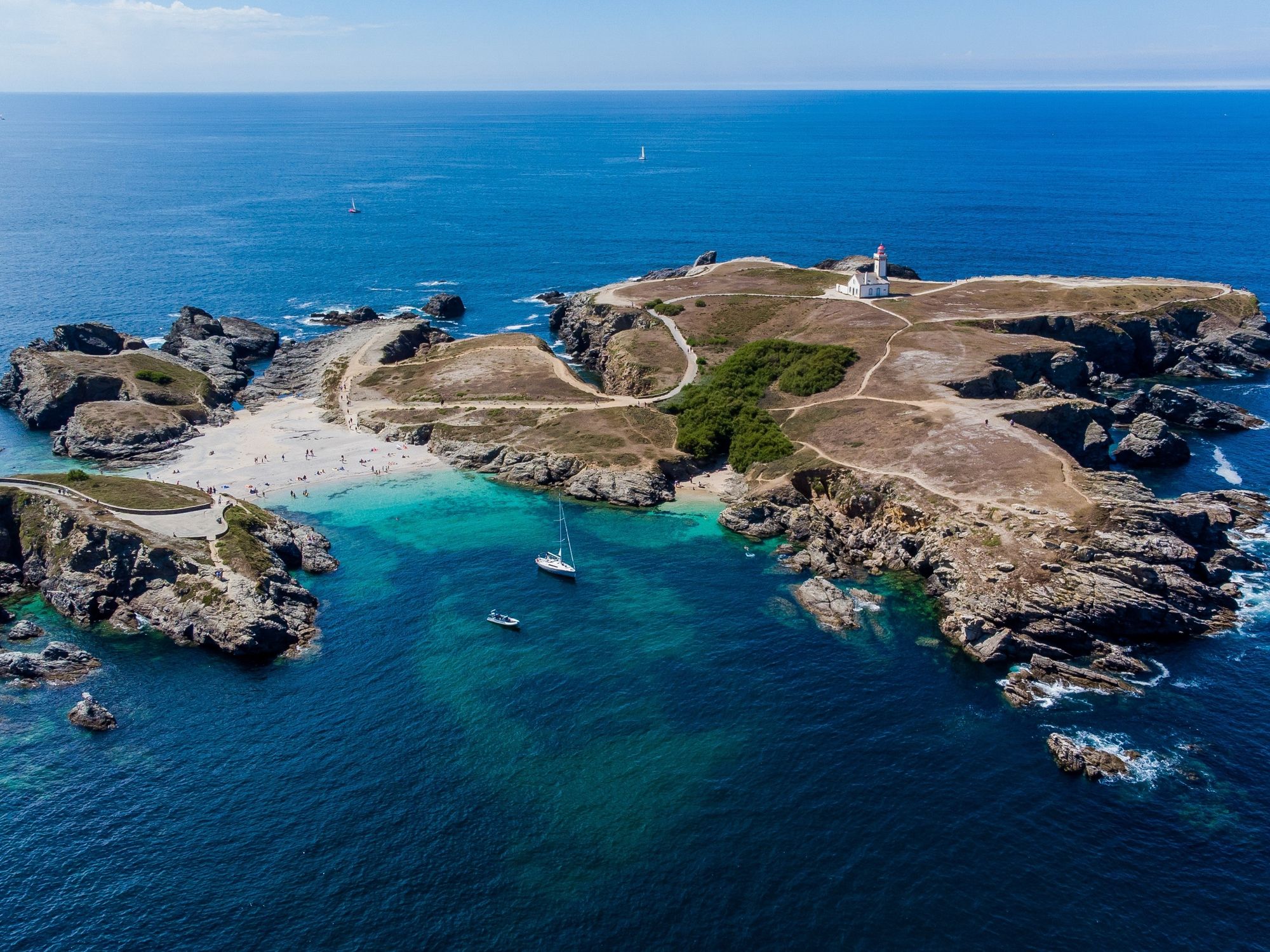
Our first route ends on the west coast of France, crossing the wastelands and mountains, the history and culture of a part of this country with a rich heritage.
